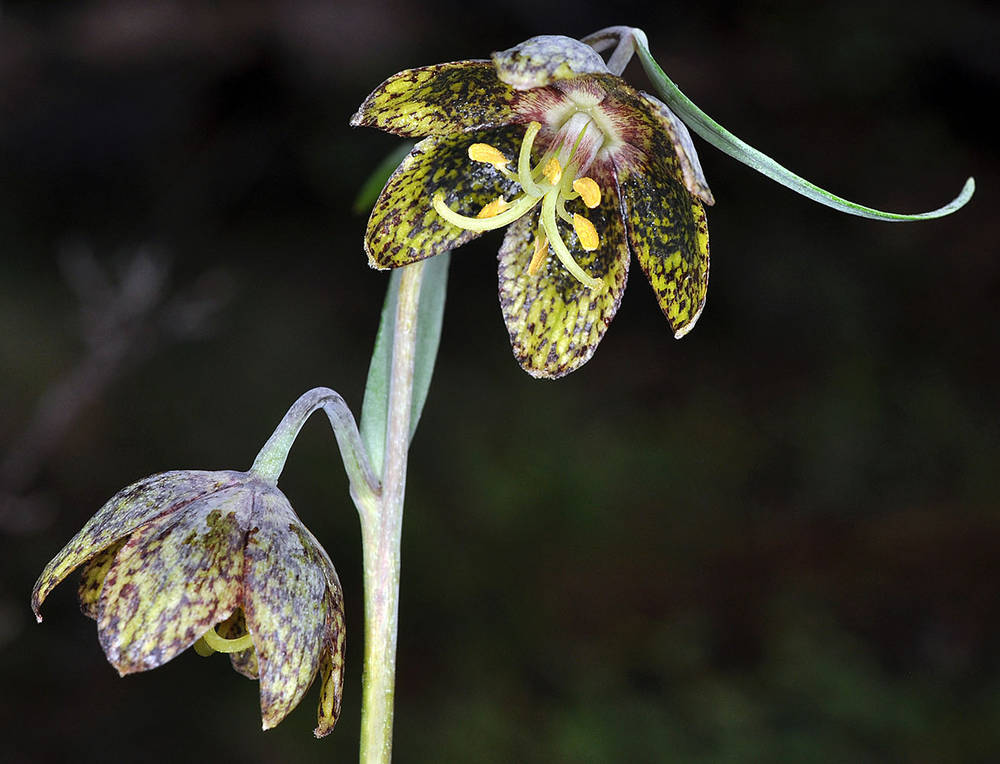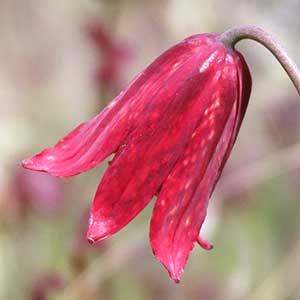Fritillaria atropurpurea
Fritillaria gentneri
spotted fritillary
Gentner's fritillary
10–60 cm.
10–70 cm.
in whorls of 2–3 leaves per node, 4–13 cm long;
blades linear to lanceolate.
in 1–3 whorls of 3–5 leaves per node or alternate, 5–15 cm long;
blades broadly linear to oblanceolate.
widely spreading;
perianth oblong to more or less squareshaped, 1–2(2.5)cm long;
segments brownish purple with yellow or rarely white mottling;
apex not recurved;
nectaries obscure, covering most of perianth segments;
style branched for more than 50% its length.
perianth segments oblong to oblanceolate, 3–4 cm long, red to purple with yellow mottling;
apex weakly recurved or not;
nectaries linear, approximately 50% perianth segment length;
style branched for 33–50% its length.
capsules angled.
capsules winged.
=36.
Fritillaria atropurpurea
Fritillaria gentneri
Dry or grassy slopes, often under trees or bushes. Flowering May–Jul. 100–2500m. BR, BW, Casc, ECas, Owy, Sisk. CA, ID, NV; east to ND and NB, southeast to NM. Native.
Dry woodlands. Flowering Apr–May. 100–1600 m. Sisk. Native.
In addition to morphological traits, DNA evidence implies that F. gentneri is a hybrid between F. affinis and F. recurva (Meyers 2006). Whether this proposed hybridization event was recent or older warrants more study.
Stephen Meyers
Stephen Meyers





